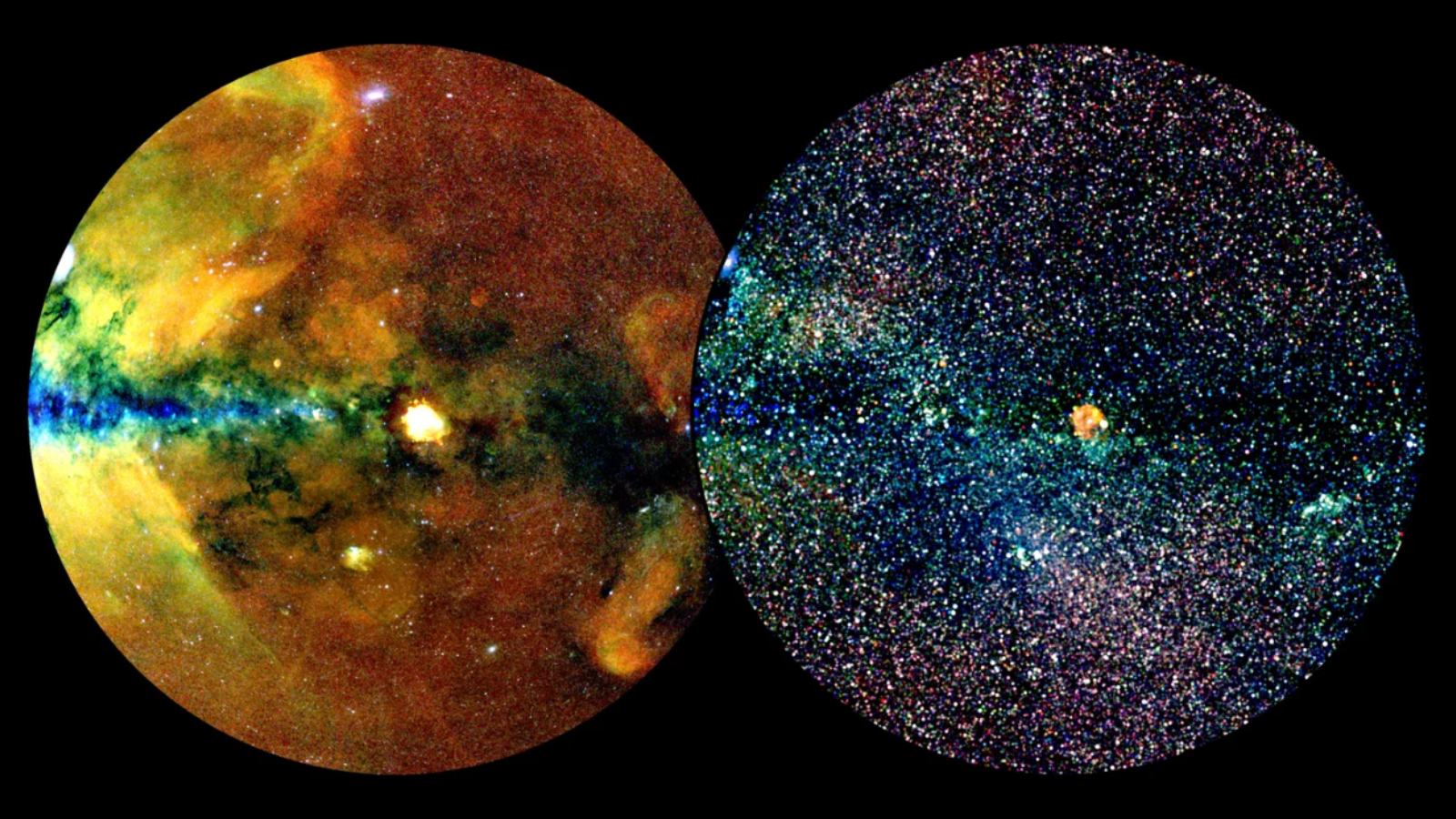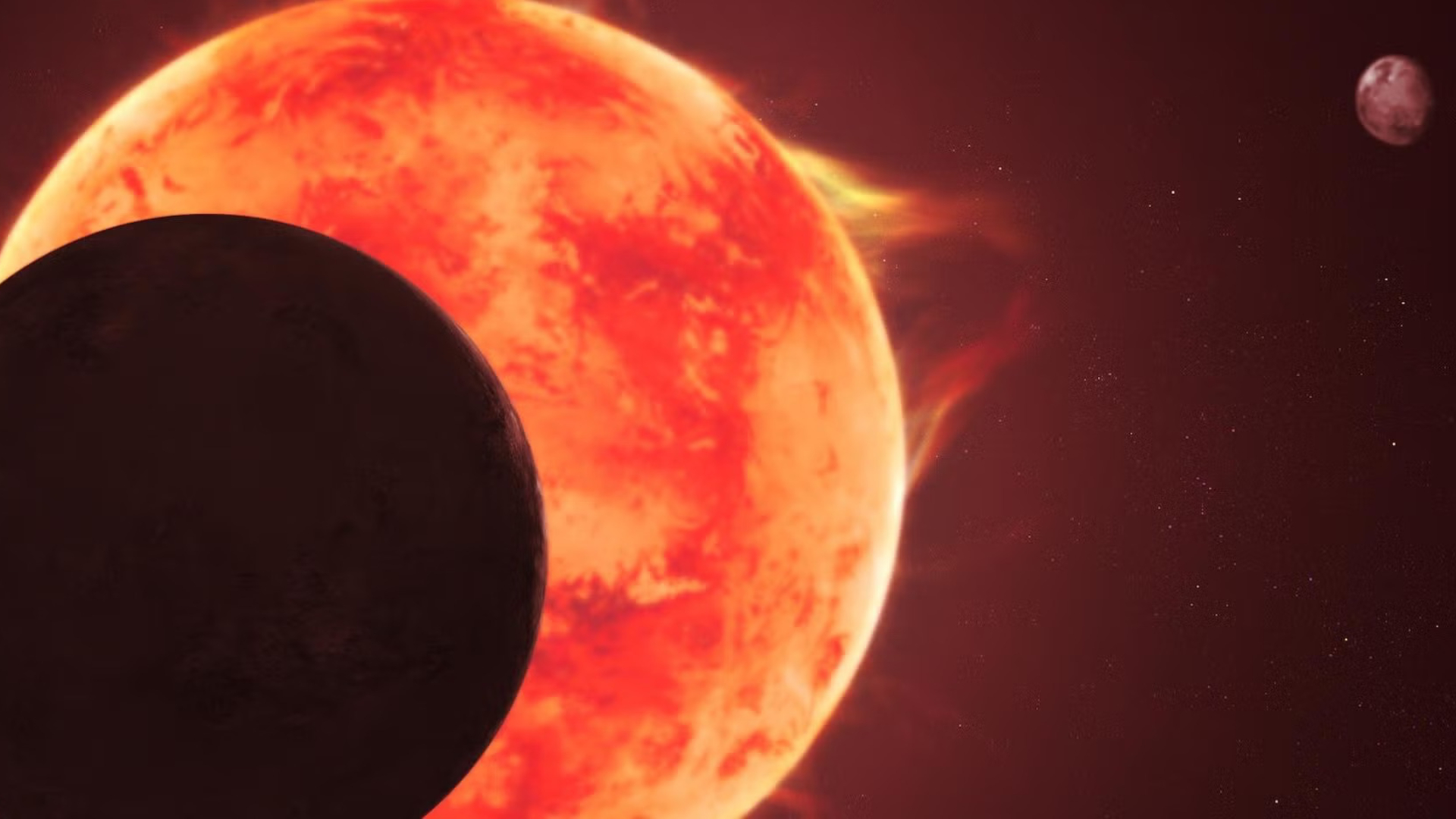X-ray image of universe reveals almost 1 million high-energy objects: 'These are mind-blowing numbers'
"The scientific breadth and impact of the survey is quite overwhelming; it’s hard to put into a few words."
The first data released to the public from the eROSITA sky survey comprises an X-ray view of half the sky over Earth, encompassing almost a million high-energy cosmic sources, including over 700,000 supermassive black holes.
This catalog, dubbed the "eROSITA All-Sky Survey Catalogue (eRASS1)" was published on Thursday (Feb. 1). It constitutes the largest-ever catalog of the universe's most powerful sources of energy, like exploding massive stars and black hole-powered active galactic nuclei that shine brightly in X-rays. The release also details the largest known structures in the universe — cosmic web filaments of hot gas that connect galaxies in clusters.
The results show that, in just half a year of operations beginning after launch on July 13, 2019, eROSITA has managed to discover more high-energy X-ray sources than has been found in six decades of examining the sky.
Considered a major milestone in the 60 or so years of X-ray astronomy, eRASS1 could help answer some of cosmology's biggest questions: How did the universe evolve, and why is the very fabric of space expanding at an accelerating rate?
Related: Mysterious dark energy is spread evenly across the cosmos
Accompanying the eRASS1 data are almost 50 scientific papers published across a range of topics, adding to an existing 200 papers already written using data from the eROSITA telescope.
The main aim of eROSITA is to use clusters of galaxies to observe how dark energy accelerates the expansion of the universe; these 250 or so papers, however, demonstrate the extent to which the instrument and its data have gone beyond this goal.
Breaking space news, the latest updates on rocket launches, skywatching events and more!
These papers include the discovery of over 1,000 superclusters of galaxies, the revelation of two quasi-periodic erupting black holes, and the determination of the impact that stars' X-ray radiation has on water and atmosphere retention of planets that orbit them.
"The scientific breadth and impact of the survey is quite overwhelming; it's hard to put into a few words," spokesperson for the German eROSITA consortium, Mara Salvato, said in a statement. "But the papers published by the team will speak for themselves."
eROSITA lets the numbers do the talking
The eRASS1 data consists of eROSITA telescope observations conducted from Dec. 12, 2019, to June 11, 2020. from across half the sky over Earth. During this period, the space telescope detected around 170 million individual particles of X-ray light or "photons."
Processing these photons revealed 900,000 X-ray sources, of which 700,000 are feeding supermassive black holes that power quasars at the hearts of active galactic nuclei, regions in the centers of galaxies so bright they can outshine the combined light of every star in those galaxies themselves.
Also seen in the eRASS1 are 180,000 X-ray-emitting stars in the Milky Way, 12,000 clusters of galaxies and even exotic classes of X-ray sources like binary stars, supernova remnants, pulsars and other such objects.
"These are mind-blowing numbers for X-ray astronomy," Andrea Merloni, eROSITA principal investigator and first author of the eROSITA catalog paper, said in a statement. "We've detected more sources in 6 months than the big flagship missions XMM-Newton and Chandra have done in nearly 25 years of operation."
The data release is also impressive in terms of the spread of its observations, with the sky over Earth imaged at multiple X-ray energies. In addition to this, eROSITA is incredibly precise, with its first data release also pinpointing positions in the sky from which individual photons are received, as well as these photons' arrival times and energies.
Along with the release, the eROSITA Consortium has also made available the software needed to analyze data from the X-ray telescope as well as catalogs that go beyond just X-ray data.
"We've made a huge effort to release high-quality data and software," eROSITA Operations team leader, Iriam Ramos-Ceja, said. "We hope this will broaden the base of scientists worldwide working with high-energy data and help push the frontiers of X-ray astronomy."

Robert Lea is a science journalist in the U.K. whose articles have been published in Physics World, New Scientist, Astronomy Magazine, All About Space, Newsweek and ZME Science. He also writes about science communication for Elsevier and the European Journal of Physics. Rob holds a bachelor of science degree in physics and astronomy from the U.K.’s Open University. Follow him on Twitter @sciencef1rst.

